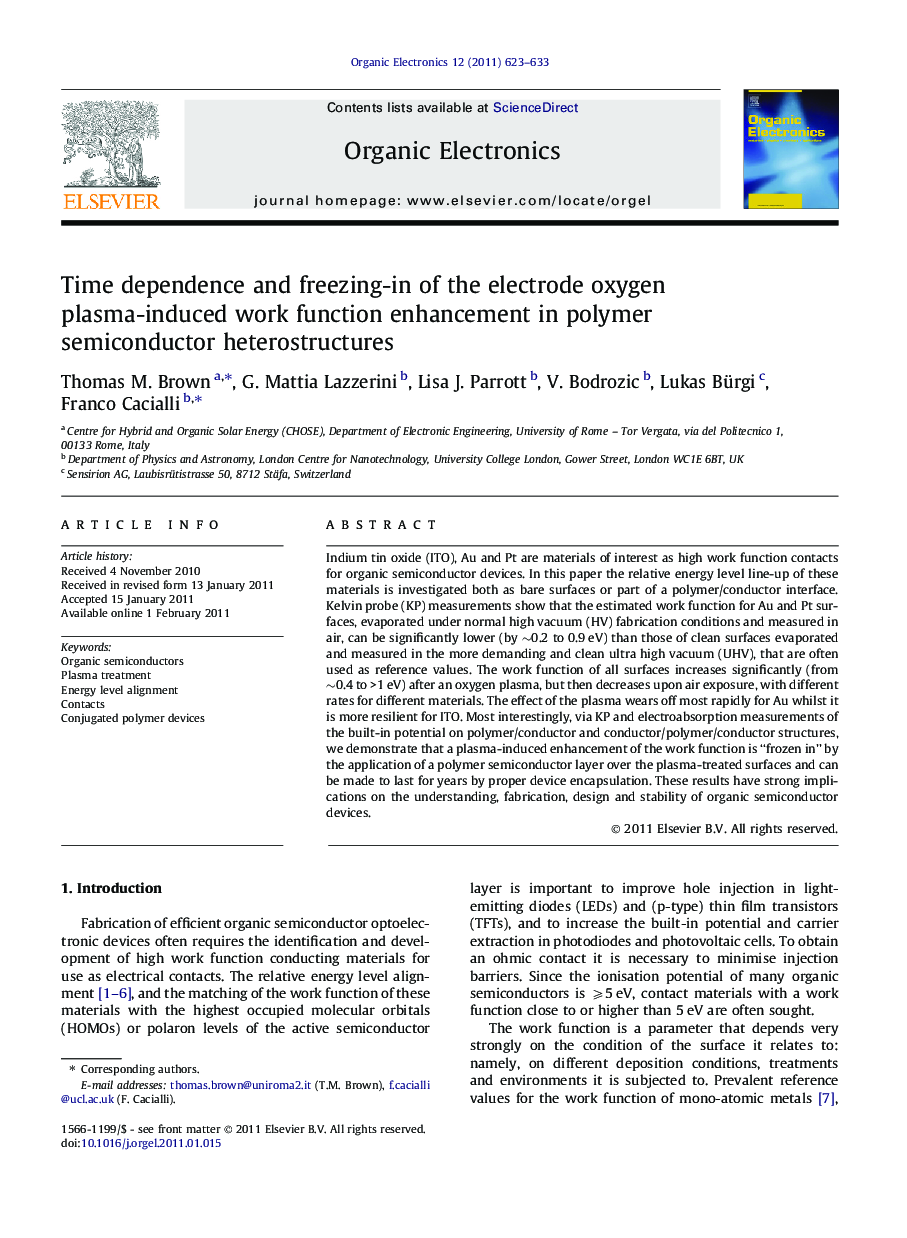| کد مقاله | کد نشریه | سال انتشار | مقاله انگلیسی | نسخه تمام متن |
|---|---|---|---|---|
| 1265435 | 972221 | 2011 | 11 صفحه PDF | دانلود رایگان |

Indium tin oxide (ITO), Au and Pt are materials of interest as high work function contacts for organic semiconductor devices. In this paper the relative energy level line-up of these materials is investigated both as bare surfaces or part of a polymer/conductor interface. Kelvin probe (KP) measurements show that the estimated work function for Au and Pt surfaces, evaporated under normal high vacuum (HV) fabrication conditions and measured in air, can be significantly lower (by ∼0.2 to 0.9 eV) than those of clean surfaces evaporated and measured in the more demanding and clean ultra high vacuum (UHV), that are often used as reference values. The work function of all surfaces increases significantly (from ∼0.4 to >1 eV) after an oxygen plasma, but then decreases upon air exposure, with different rates for different materials. The effect of the plasma wears off most rapidly for Au whilst it is more resilient for ITO. Most interestingly, via KP and electroabsorption measurements of the built-in potential on polymer/conductor and conductor/polymer/conductor structures, we demonstrate that a plasma-induced enhancement of the work function is “frozen in” by the application of a polymer semiconductor layer over the plasma-treated surfaces and can be made to last for years by proper device encapsulation. These results have strong implications on the understanding, fabrication, design and stability of organic semiconductor devices.
Figure optionsDownload as PowerPoint slideResearch highlights
► The work function (WF) of ITO, Au and Pt increases by > 0.4–1 eV after oxygen plasma treatment.
► The work function then decreases upon contact with air.
► The enhancement is ‘‘frozen in” by a polymer layer over plasma-treated contacts.
► This enhancement can be made to last for years by proper device encapsulation.
► The work function of ITO is stable over long periods after rinsing and blow-drying.
Journal: Organic Electronics - Volume 12, Issue 4, April 2011, Pages 623–633